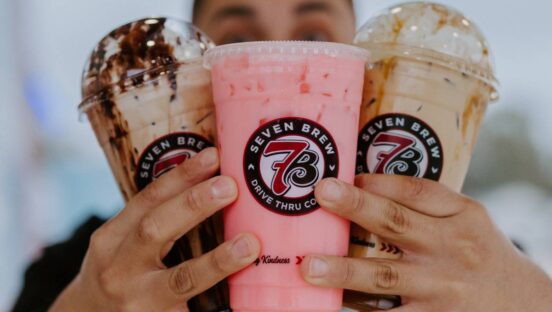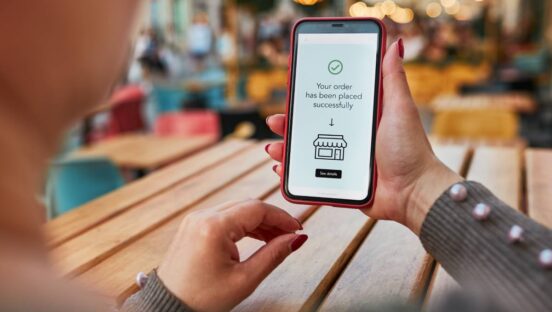While tipping has never been a customer expectation in the limited-service restaurant industry, some chains have implemented gratuity options with their new, higher-tech point-of-sale systems, like counter payment terminals or mobile apps. But not every brand is certain whether tipping is appropriate in the category.
In mid-March, Starbucks added an option to its mobile app, allowing customers paying via the app to add a tip of 50 cents, $1, or $2 to their order. App users also have a two-hour window to decide if their service was worth a tip, so they can choose to tip after they leave the drive thru or visit a Starbucks restaurant.
Meanwhile, Jersey Mike’s Subs rolled out a customer payment system earlier this year that, at some franchised locations, prompts customers to leave a 10 percent, 15 percent, or 20 percent gratuity, or no tip at all. Hoyt Jones, president of the 770-unit Jersey Mike’s, says the new system—an electronic, consumer-facing payment terminal from Ingenico—helps the company stay ahead of future payment technologies and enhances its loyalty program.
The gratuity option, he says, just happens to be a part of the new system, and isn’t too far off the tipping protocol the restaurants had in place before. In the past, franchisees could include a “tip” line printout on the customer’s paper receipt, similar to casual and full-service dining receipts. The line was typically included when orders were $25 or more.
The new electronic keypad method, which can be customized by the franchisee to include the gratuity option or not, is more private for consumers, Jones says. “From a consumer standpoint, the customer-service representative doesn’t know what option they chose,” he says. “If the consumer decides to leave a tip, great; if not, no problem.”
At Jersey Mike’s, customers tip on large orders—those over $20 or $25—about 90 percent of the time, but it is not a requirement that the franchisee include the option, Jones says. “We don’t go out of the way to encourage it. It is a store-by-store preference.”
High-tech, touch-screen POS terminals, like those offered by payment technology providers Ingenico, Square, and Clover, are one of the reasons tipping in limited service has become a topic of conversation. The terminals allow customers to pay and sign electronically, and operators can choose to build a gratuity option into that touch point.
Clover reports that most of its quick-serve and fast-casual restaurants choose to use the optional gratuity feature included on its terminal. With Clover, customers can choose whether to tip 5 percent, 10 percent, 15 percent, 20 percent, 25 percent, or 30 percent.
“Long term, the vision is that, increasingly, we are going to a more paperless universe,” says Mark Schulze, vice president of business development for Clover. “Over time, we will also see more pay-at-the table experiences. Tipping and signing is pretty important for the table experience.”
With Square’s “Smart Tip Amounts,” which can be turned on or off by restaurants, when a transaction is less than $10, the available tipping options are No Tip, $1, $2, or $3. For a transaction that is $10 or more, the available tipping options are No Tip, 15 percent, 20 percent, or 25 percent. Operators can also create custom tip amounts by selecting the “Set Percentage Amounts” button within their settings, says Square spokeswoman Catherine Ferdon via email.
“For many of our customers, tipping is the primary way employees make money,” Ferdon says. “We want to build an experience that balances being effortless, not disrupting the connection between the buyer and the seller, and encouraging tipping.”
Charles Billies, owner of fast-casual restaurant Souvla in San Francisco, is one Square client that opted to include the gratuity option in his system. “Thanks to the built-in tipping feature, our staff is doing very well here financially,” he says via email. “That helps sustain employee retention and morale.”
Still, not everyone in the industry is sold on the idea that tipping in a fast-casual or quick-service setting is a good idea. Don Fox, CEO of Firehouse Subs, says the company has a “very specific policy against tipping,” and that any tips left at a Firehouse Subs restaurant get donated to the brand’s longtime charitable organization for first responders, the Firehouse Subs Public Safety Foundation.
“One of the advantages of fast casual compared to casual is its lower check average. When you are encouraging gratuities, it tends to work against that, and you look at alienating customers,” Fox says. “You have people trading to you from other [restaurant] experiences. You don’t want to scare them away with unnecessarily high checks and scare them back into another [category].”
Dennis Lombardi, executive vice president of foodservice strategies at WD Partners, also believes that adding gratuity prompts to POS terminals could harm quick-serve restaurants’ business.
“I tend to think it’s going to rub a number of customers the wrong way,” he says. “It may not work to the ultimate benefit of the store, or the employees, for that matter.”
Lombardi says most consumers don’t feel the need to tip for limited service. Particularly in the competitive sandwich category, operators need to be careful with how they handle gratuities, he says. “I can get a very comparable product at a number of nearby alternative brands,” he says.













